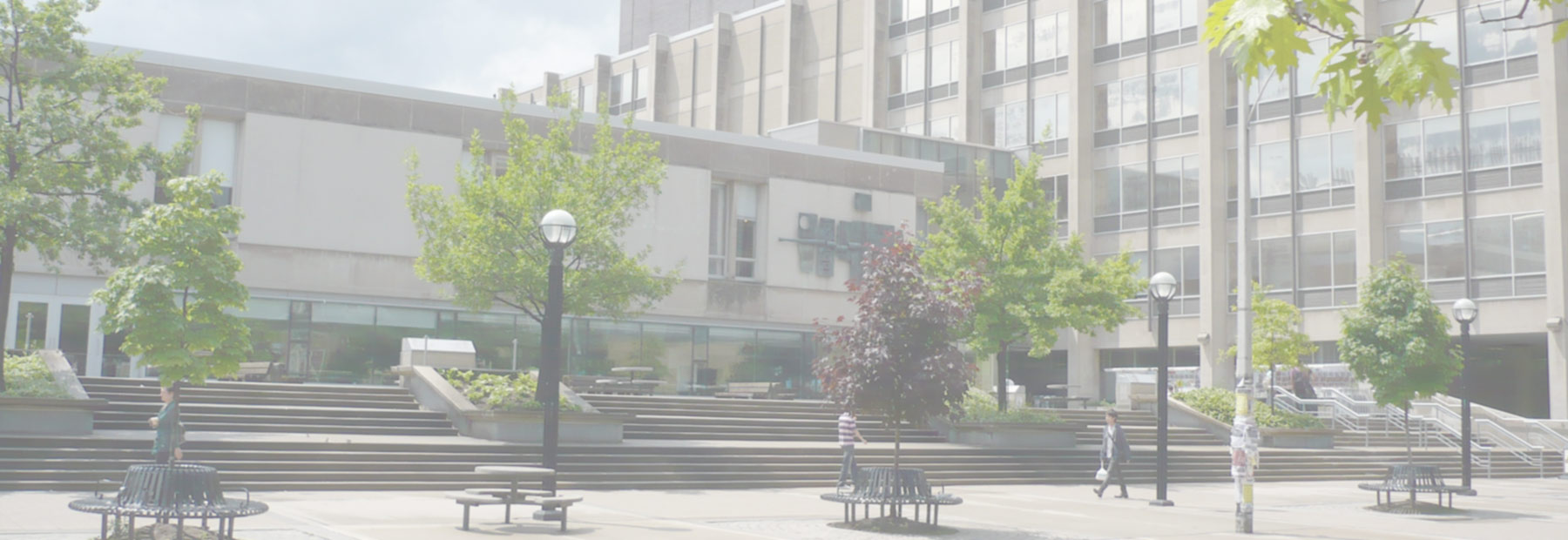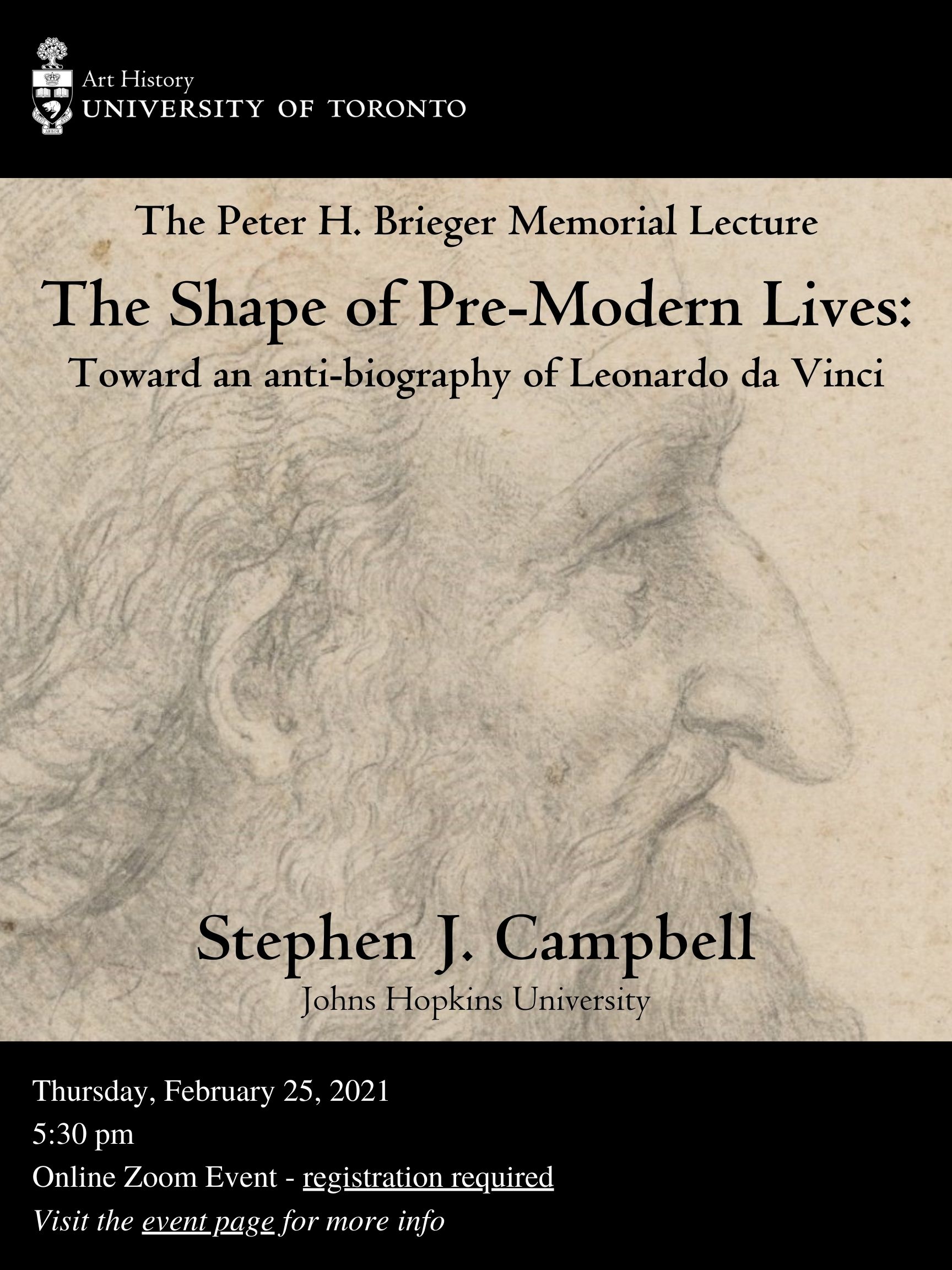Peter H. Brieger Memorial Lecture Series: Stephen Campbell, Johns Hopkins University
When and Where
Speakers
Description
The Department of Art History at the University of Toronto presents the 2021 Peter H. Brieger Memorial Lecture.
"The Shape of Pre-Modern Lives: Toward an anti-biography of Leonardo da Vinci"
Dr. Stephen J. Campbell
Henry and Elizabeth Wiesenfeld Professor & Director of Graduate Studies
Department of the History of Art
Johns Hopkins University
Registration for this free lecture is required. Please register using the Register+ button at the top of the page or this link.
Dr. Stephen Campbell was educated at Trinity College, Dublin, the University of North Carolina, and Johns Hopkins University. Before joining the faculty of Johns Hopkins in 2002, he taught at Case Western Reserve University (1993-94), the University of Michigan (1995-1999), and the University of Pennsylvania (1999-2002). In 1993, he published a book for a general audience on the Great Irish Famine of 1847-1851, with a preface by President of Ireland Mary Robinson. Dr. Campbell’s research and publication in the field of pre-modern Italian art have dealt with the role of art in courts, cities and state formation; the Renaissance literature and theory of art; the body, sex and gender; the histories of collecting and canon formation, and more recently the geographies of art in Italy and the Mediterranean.
A central concern is the role of style in visual communication. Dr. Campbell’s writing on role of calligraphic line in the fifteenth century Ferrarese painter Cosmè Tura, or disturbing stylizations of the body in the work of the sixteenth century Florentines Pontormo or Rosso is grounded in the inseparability of formal/aesthetic concerns on one hand and discursive/semiotic ones on the other. The 2006 book The Cabinet of Eros made a case for the interdependency of literary and aesthetic concerns to one of the distinctive idioms of Renaissance art (secular and mythological painting), in opposition to Modernist and modernizing narratives about the period which have tended to treat “literariness” as a vestige of the non-artistic. The book also sought to re-open the question of the role of paganism and the pagan gods in the elite cultures of Renaissance Italy before and after 1500; it locates discussion of two important cycles of mythological paintings (for the studioli of Isabella and Alfonso d’Este) away from the idiosyncrasies of individual patrons and into a more systematic examination of the cultures of reading and collecting among Italian elites, while maintaining a focus on questions of gender, sexuality, and embodied viewing. More recent work on the principle of “grafting’ in Venetian art (especially Titian and Giulio Campagnola) develops further analogies with modes of literary composition in the 1500s. Other work has concerned the construction of Jews and Judaism in Renaissance Christian art (Ferrara, Rome and Brescia in particular) – through stylistic as well as iconographical means. Forthcoming books include The Endless Periphery. Towards a Geography of Art in Lorenzo Lotto’s Italy (Chicago: University of Chicago Press, June 2019) and Andrea Mantegna: Humanist Aesthetics, Faith, and the Force of Images (Turnhout: Brepols, 2020).



